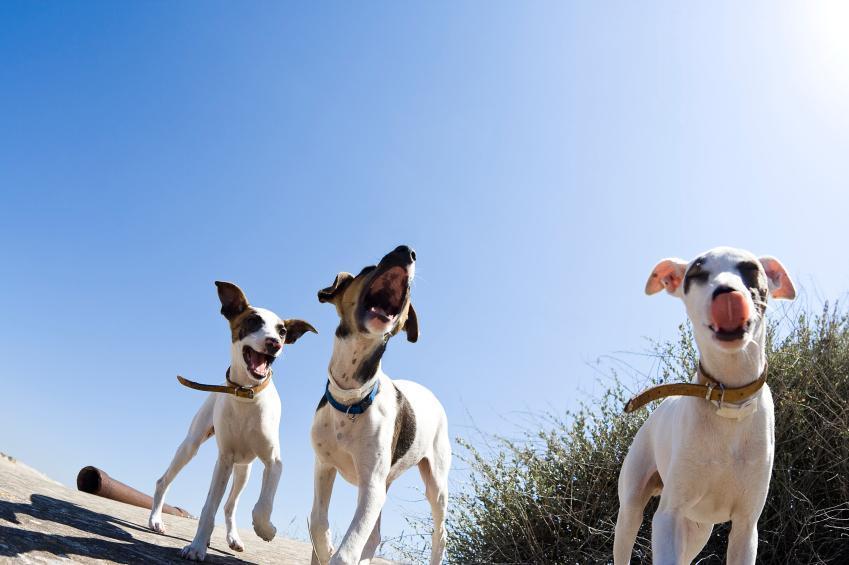Differences Between Male and Female Dogs



See files for Dogs
The feminine and masculine nature are very different, although they complement each other perfectly. The differences between the two are manifested through anatomy, physiology and behavior, and not only in the human species. We can observe these differences perfectly when comparing both genders in dogs.
When adopting a dog, gender does not have to be decisive. However, knowing the characteristics and main differences between male and female dogs can help us to make a more appropriate decision and to live with a pet that can adapt to our lifestyle easily.
In this AnimalWised article we expose the main differences between male and female dogs. But after all, leaving aside the question of gender, these animals will always be man's best friend.
Anatomical differences
The anatomical differences may be the most evident between male and female dogs.
Females obviously possess a different reproductive apparatus, which externally we can observe by the presence of the vulva and breasts. In addition, they weigh and measure less than male dogs.
Males have a penis and testicles as part of their reproductive system (the urethra therefore also slightly changes their anatomical position). A common doubt is whether male dogs have breasts, and although they obviously do not have any reproductive function and are not as well developed as females, yes they do. Males are endowed with a greater height and greater weight, are generally more corpulent, although the difference of weight and height becomes more or less evident according to the specific breed.

Heat in females and males
Another aspect to take into account if we speak of the differences between male and female dogs is heat or the reproductive cycle.
- Females
Female dogs go into heat twice a year, every six months. In this cycle there will be a period in which the female develops a great receptivity to be mounted by a male dog, and if you are not ready for a litter of puppies, then you must exercise extreme caution and vigilance.
Every 6 months we will observe a very different phase in her estrous, which is the period of menstruation, which indicates that our dog will have blood loss for about 14 days. After the menstruation of the females, she will have high levels of progesterone, which can in turn, induce psychological pregnancy.
During the psychological pregnancy the dog can manifest a very different symptomatology: she is nervous, adopts and protects diverse objects as if they are puppies, looks for isolated places to rest and her abdomen is distended and the breasts are swollen. She may even secrete some milk.
- Males
It is quite different for males, since they are in heat throughout the year. This means that at any moment they can escape to look for a female who is receptive. Males can mount an infinity of objects and this behavior is sometimes accompanied with a certain aggressiveness.
- Both genders
AnimalWised recommends reviewing the advantages of sterilizing a dog to avoid behavioral changes, anxiety or the appearance of some diseases. In addition it is also responsible practice to avoid a possible unwanted pregnancy.

Differences in behavior
We have observed that the reproductive cycle or heat in male and female dogs is very different, but the release of female and male hormones also ends up affecting their behavior very much.
Generally, it is believed that the female dog is more affectionate and more homelike, that instead the male is more independent and active. However this has no scientific basis and these factors depend entirely on each particular dog.
What we can say is that hormones determine a part of the behavior of dogs, depending on whether there is a greater concentration of female or male hormones.
The behavior caused by sex hormones can be softened after sterilization, however, it cannot be eliminated, because there are changes in brain development that mark these differences between genders and are not modifiable.
Females are better suited to homes where young children reside, because they are more protective, they are also more docile and respond better to canine training.
Male hormones that predominate in males, on the other hand, make dogs more reluctant to obey orders, making training more difficult. In addition, in males we can clearly observe a territorial behavior that they manifest through marking with urine. Male dogs can also be more aggressive with dogs of the same sex.
- You should know that although male dogs may have a dominant or aggressive tendency towards other dogs of the same sex, it can be avoided by good socialization from puppyhood. It is essential that all dogs receive socialization so that in the future they can properly relate to other dogs, pets and people.

Living with other dogs
If we want to adopt a dog but have another dog at home, then gender is very important, especially if dogs are not castrated.
- When we join unmarried specimens of different genders we will encounter a problem and that is the male will try to mount the female all the time. In this case the sterilization will be fundamental, since the female can be hostile if she does not want to be mounted or vice versa if the female does not let the male copulate.
Remember the number of dogs that are abandoned daily in the world, do not put another innocent puppy in a kennel or shelter.
- Joining two males or two non-castrated females can also be a problem at times because they can compete for the same female or male. They can be territorial, they may not get along, etc.
- Finally joining any dog with another castrated dog avoids worrying about aggressiveness between both or a possible pregnancy etc. However, sometimes (and if they are both adults) conflicts can arise. For this it is best to go to a shelter with our dog and check what attitude shows with which we intend to adopt.
Remember that dogs are pack animals, they like to live together as a group. So if you are considering adopting another dog, go to a shelter where you will find siblings who will thank you for rescuing them for the rest of their lives.

Choosing gender responsibly
As we mentioned at the beginning of this article, dogs are exceptional pets, regardless of gender. However, we must be fully responsible with our choice.
This means that if we welcome a male dog we must be consistent with the sexual behavior that they can show and we must know that the sterilization of the dog may be a very recommendable option in some cases.
Instead, if we host a female we are responsible for her reproduction. If we decide to have pups, we must take into account the future of these puppies, get informed about about the pregnancy of a female dog and be prepared to attend to her delivery. On the contrary, if we do not want her to reproduce we must opt for sterilization or extreme vigilance to prevent a dog from mounting her.
It doesn't matter that much whether you choose a male or female dog, as long as you are aware at all times of the responsibility you are accepting.

If you want to read similar articles to Differences Between Male and Female Dogs, we recommend you visit our What you need to know category.










